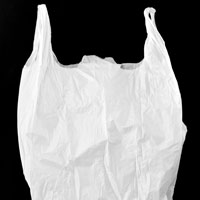
Group alleges ACC influenced comments about plastics in Calif. curricula
PLASTICS NEWS REPORT
Posted August 22, 2011
WASHINGTON (Aug. 22, 2:35 p.m. ET) — An investigative reporting team alleges that the American Chemistry Council pressured educational officials in California to revise a section of an environmental curriculum to present positive information about plastic shopping bags.
Washington-based ACC says the allegation “distorts and misrepresents” what took place during a public comment period.
The California EPA also issued a statement, saying that all revisions to the Education and Environment Initiative curriculum were made for “accuracy and educational value” and “thoroughly vetted.”
California Watch, a reporting initiative of the Center for Investigative Reporting, claims that Gerald Lieberman, a private consultant hired by California school officials, added a new section to the 11th-grade teachers’ edition textbook called “The Advantages of Plastic Shopping Bags,” with the title and some of the textbook language inserted almost verbatim from letters written by the chemistry council.
California Watch posted the report on its website on Aug. 19.
The group also alleges that Lieberman added a workbook section that asks students to list some advantages of plastic bag, and that the correct answer in the revised teachers’ edition is that “plastic shopping bags are very convenient to use. They take less energy to manufacture than paper bags, cost less to transport and can be reused.”
The claim by California Watch “distorts and misrepresents public process and the role the ACC played in it,” said Steve Russell, ACC’s vice president of plastics. “When CalEPA developed its curricula, the agency … posted an invitation [for public comment] on draft versions of the curricula.”
“We submitted comments in response to the state’s public solicitation for input,” Russell said. “The purpose of our comments was to correct factual inaccuracies and to present a more complete view of plastic bags’ environmental attributes, including their benefits, which were absent from the draft. Our comments, and those of all other stakeholders, were submitted via email and through an online form on CalEPA’s website.”
Lieberman is director of the State Education and Environment Roundtable, a nonprofit group developed by 16 state departments of education to enhance environmental education in schools. He declined to comment on his role in editing the textbook, and referred Plastics News to CalEPA, which defended the EEI curriculum.
“We stand by the integrity of the EEI Curriculum and the open and transparent process in which it was created,” said Lindsey VanLaningham, director of communications for CalEPA. “The curriculum was thoroughly vetted by all appropriate state agencies and was ultimately approved (unanimously) by the California State Board of Education.”
“Throughout the development process, the state made revisions to the curriculum based on two primary factors: (1) accuracy; and (2) educational value,” said VanLaningham. “Teacher feedback supports our belief that the EEI engages students on issues of vital importance to them and their environment, including the role of plastic in our society.”
Regardless, state Sen. Fran Pavley, D-Santa Monica, author of the 2003 legislation that requires that environmental principles and concepts be taught in the state’s public schools, plans to write ask CalEPA officials to tweak the current text to remove language that portrays plastic bags in a favorable light.
The curriculum covers science, history, social studies and the arts, and weaves in environmental principles and concepts. It is currently being tested at 19 school districts that include 140 schools and more than 14,000 students. And an additional 400 school districts have signed up to use it, according to Cal-EPA.
In its letter to CalEPA dated Aug. 14, 2009, ACC said that it felt the lesson plan on Mass Production, Marketing and Consumption in the Roaring Twenties was “extensive in its inaccuracies and bias about plastic and plastic bags.
“The ACC takes exception to the overall tone, instructional approach and the lack of solutions offered — most especially, the lack of mention of the overall solution of plastic recycling,” wrote Alyson Thomas, a senior account executive with Ogilvy Public Relations Worldwide, who submitted the letter on behalf of ACC.
“We recommend that the list of concerns related to plastic bags be balanced with a measured response regarding efforts … to promote the recycling of plastic bags,” ACC said.
Plastic bags are referred to as “litter” in the text, ACC said. “To be clear, plastic bags don’t start as litter. They can become litter through behavioral actions leading to inappropriate disposal.”
The new text incorporated that view, as it now says that plastic bags “can become litter,” instead of calling them litter as the original version.
According to California Watch, the first teachers’ edition also had been highly critical of plastic shopping bags, noting the long decomposition rate of the bags and their threat to marine life and ocean health.
That information remains in the text, but a section on the benefits of plastic bags was added, after ACC made its comments.
“To counteract what is perceived as an exclusively negative positioning of plastic bags issues, we recommend adding a section entitled “Benefits of Plastic Shopping Bags,” ACC said in its letter.
It suggested that the text point out that plastic grocery bags require 70 percent less energy to manufacture than paper ones, that lightweight plastic bags save space and fuel in transport, and that paper bags are reusable, and also can be recycled and made into new plastic bags, and plastic lumber for decking, park benches and picnic tables.
“We recommend adding text referring to the second life of plastic products, and the increase in the recycling of plastic bags,” ACC said. “Recovered plastic bags and wraps can be recycled into many products, including backyard decking, fencing, railings, shopping carts and new bags.”





